By Dan Weisz
Here is an assortment of photos I have taken recently near various local bodies of water (and nearby parks).
At Fort Lowell Park, this Belted Kingfisher has been a much observed and photographed bird. She (that rusty belt lets us know this is a female) has been feeding at the pond in the park for much of this winter but she spends time daily at other nearby watering holes. Usually, she is at the opposite side of the pond, no matter what side I go to. I was lucky that at one point she flew to a low branch near me.
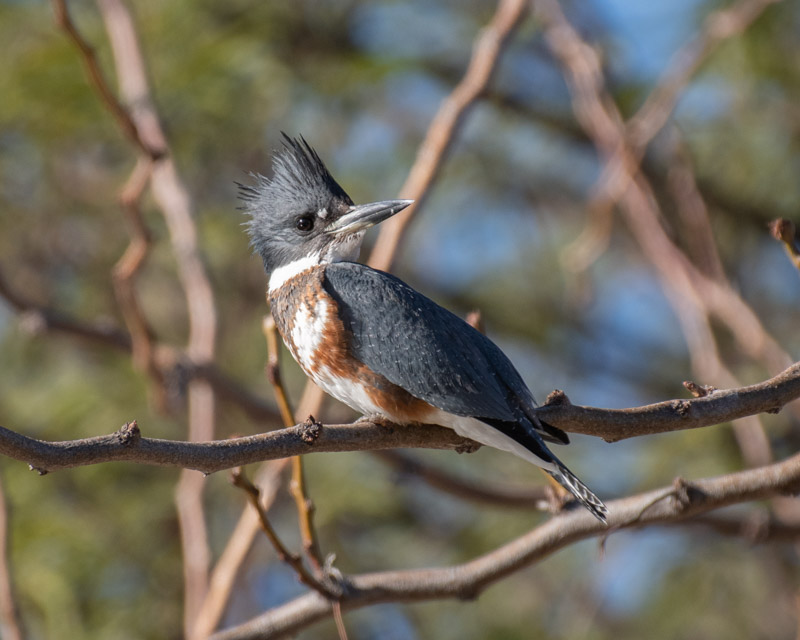
After many, many trips and attempts at photographing her, I accepted the fact that I was just not fast enough to take good pictures of her speedy feeding dives. The lighting was always wrong or I could never focus on her quickly enough. I did get this one acceptable shot though. She knows exactly where her fish prey is and she is getting to that spot without wasting a moment.
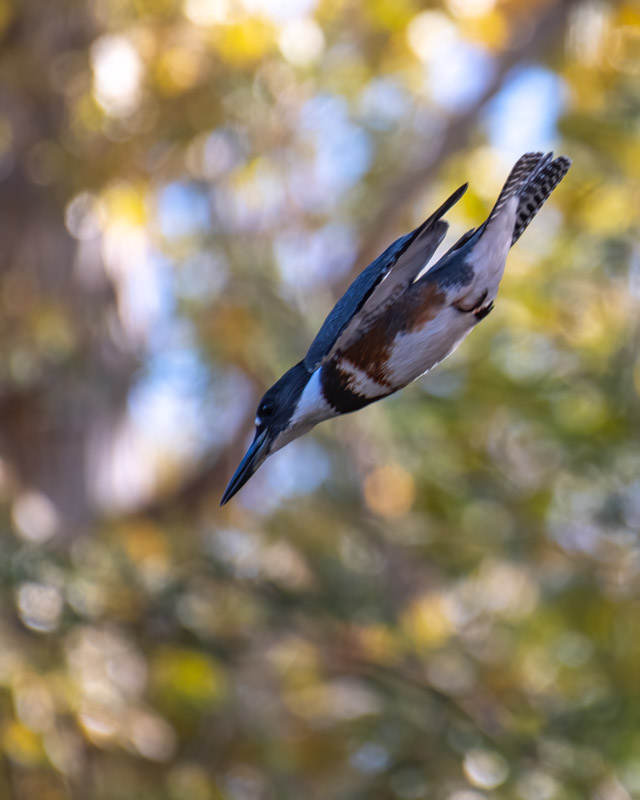
One morning, I thought that instead of futiley trying to track her in flight, I might be able to just watch where she disappears underwater, focus on that spot and wait for her to emerge. I came closer to success and was able to take this shot. It’s not as sharp as I would like but it still gives a great look at the Belted Kingfisher flying off. She has a small treat and is on her way to a branch where she will swallow her catch whole.
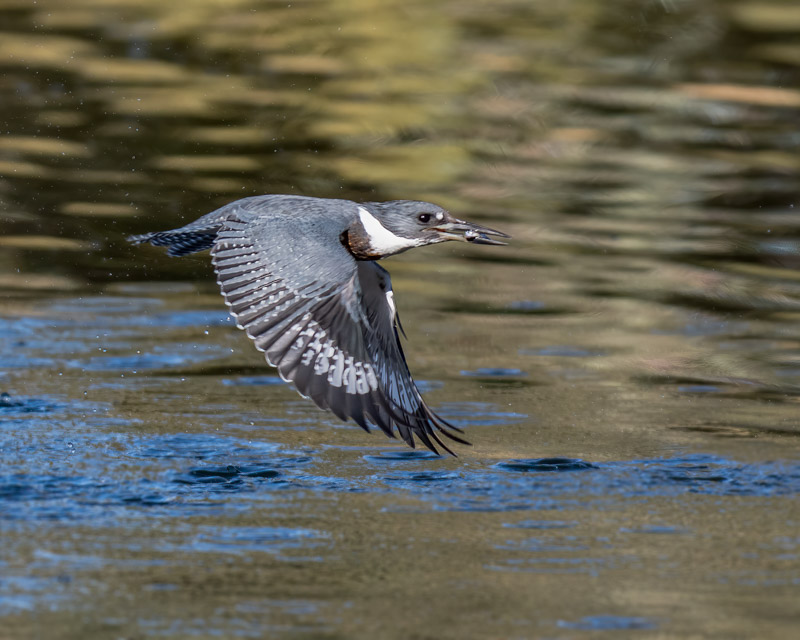
On another pond, I saw a Killdeer taking its morning bath. Killdeer are shorebirds but are commonly seen throughout the United States on lawns, athletic fields, golf courses, etc. I have seen them near water but cannot remember ever actually seeing them in water. This Killdeer (males and females look alike) spent quite a while bathing.
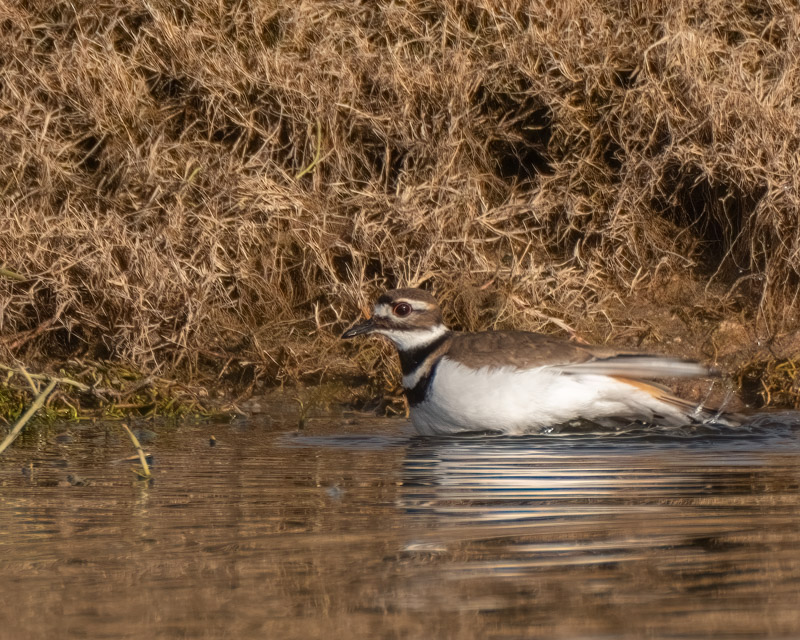
Quite a few other Killdeer were above the pond along the grassy fairways. Often, you will hear Killdeer before you see them. Their calls are distinctive: https://www.allaboutbirds.org/guide/Killdeer/sounds
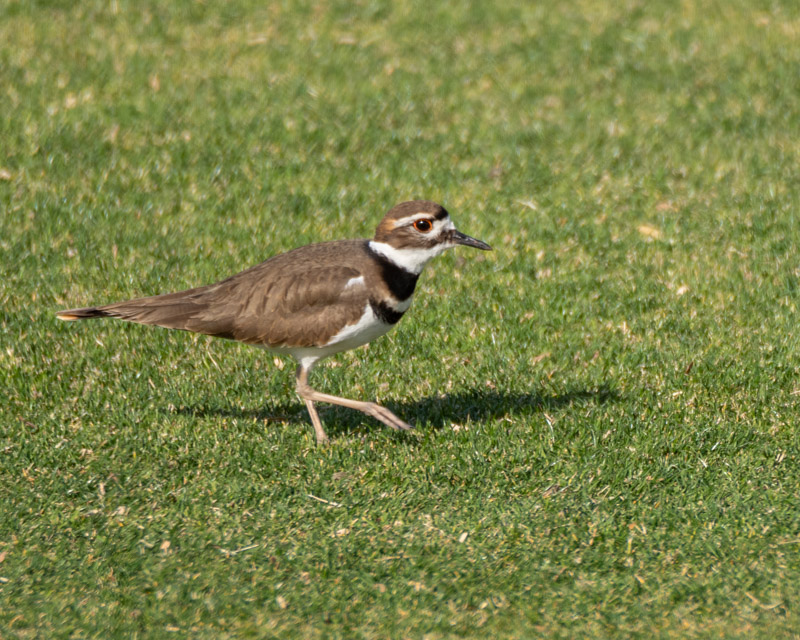
Spotted Sandpipers are uncommon winter visitors to southern Arizona but they are seen throughout the United States at some point during the year. They are shorebirds that can be “spotted” walking slowly at the water’s edge looking for food. During breeding season, these birds have a spotted belly that gives them their name. While pretty much every shorebird looks the same, Spotted Sandpipers are easy to identify because they are constantly bobbing their tail up and down while they walk.
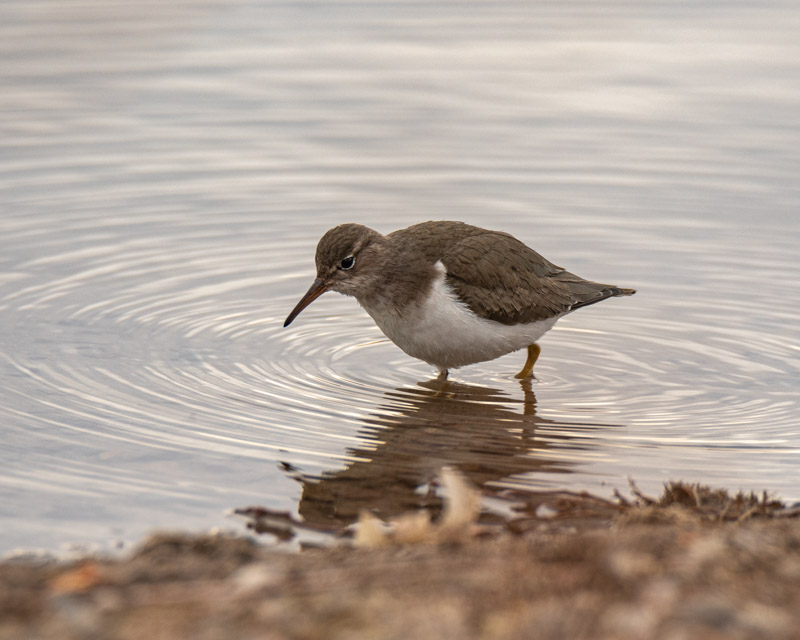
Next to another pond, a Loggerhead Shrike stood tall atop a dead tree. This masked bandit is a fierce hunter. I look forward to seeing these birds every winter.
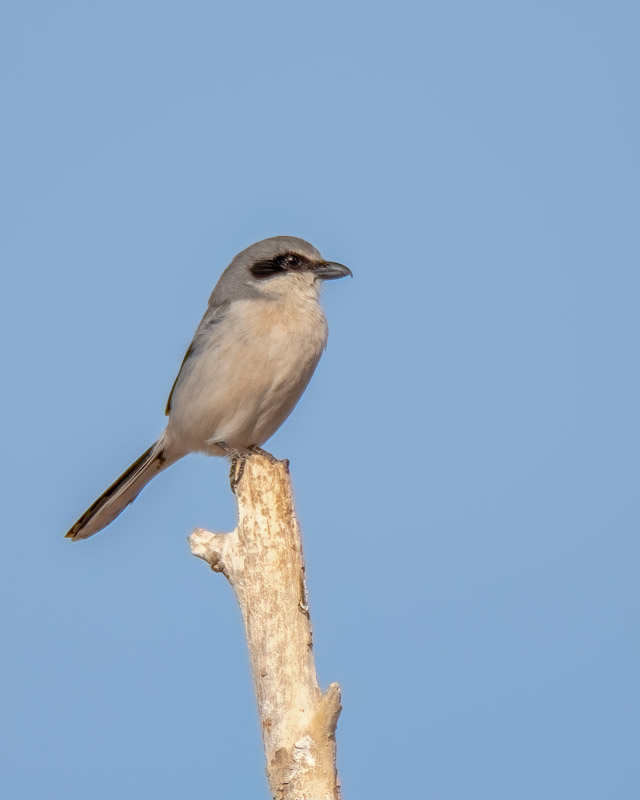
Another common winter visitor is the White-crowned Sparrow. I saw a small flock at the edge of the pond at Fort Lowell Park. These seed eaters spend most of their time on the ground searching for small seeds.
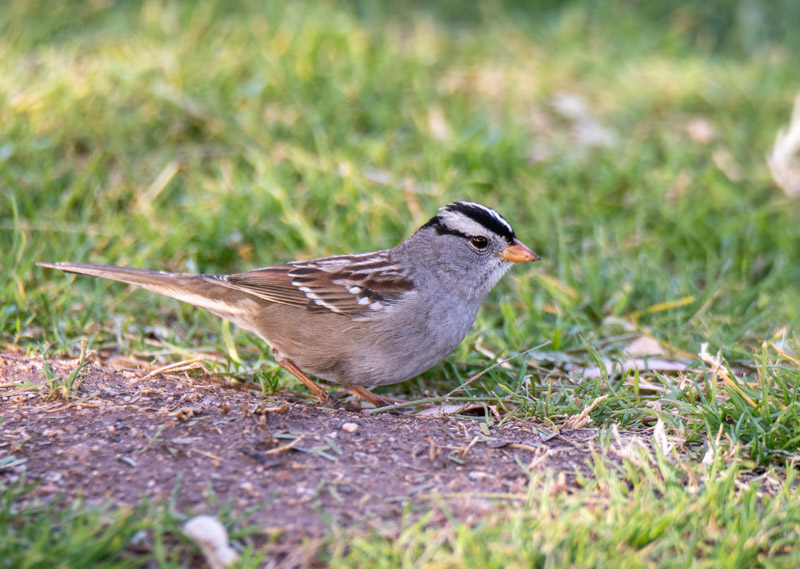
Highlighted in a patch of sunlight, this White-crowned Sparrow shows off its crown. As common as this species is in Tucson and across the United States in winter, it is amazing to think that this bird had spent its summer breeding season in Alaska and arctic Canada! That’s a long migration for a little bird.
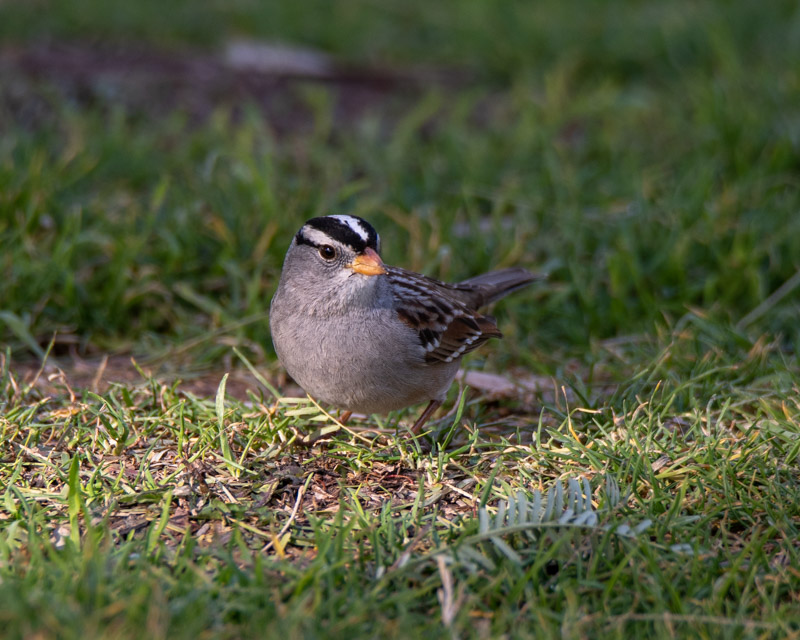
Young White-crowned Sparrows have brown rather than black markings on their head.
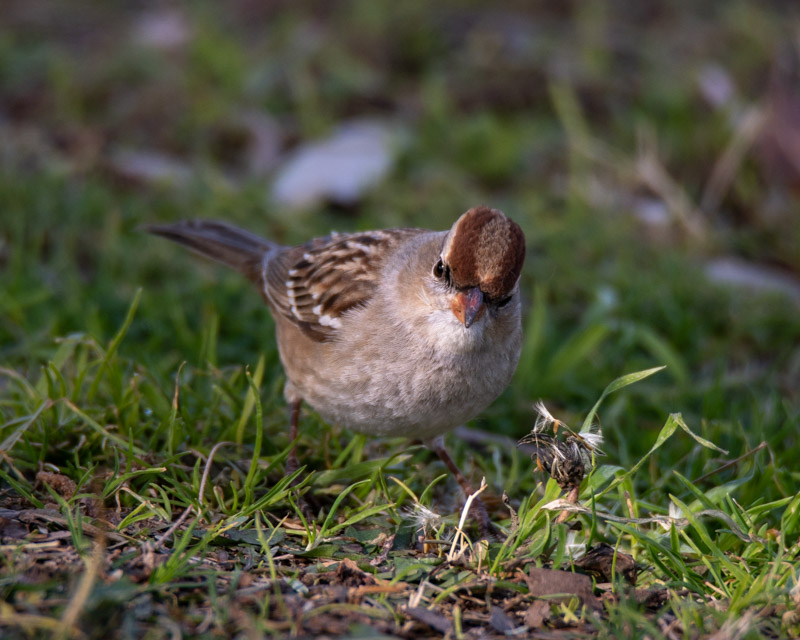
I found this Dark-eyed Junco on an open field. This is another bird that winters in our desert area. Juncos are very common forest birds and their markings are widely variable. This is a “pink-sided” Dark-eyed Junco with a pale bill, a gray head and pinkish-brown sides
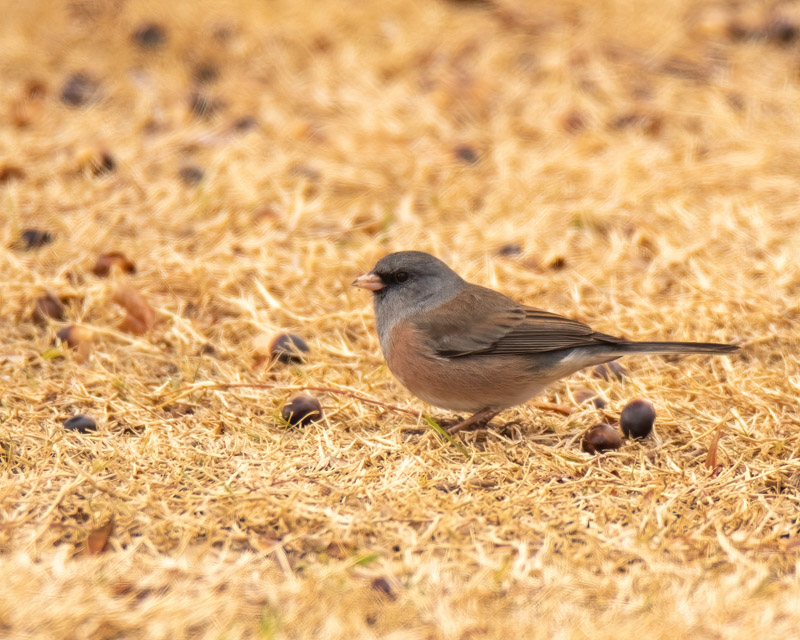
A flock of European Starlings were bathing in a parking lot ‘pond’ at Fort Lowell Park after last week’s rain. The Starling’s spotted feathers is its winter look. The white at the tip of the new feathers will slowly wear off so that by summer, the Starling will have no spots but will showcase its purplish-green iridescent feathers.
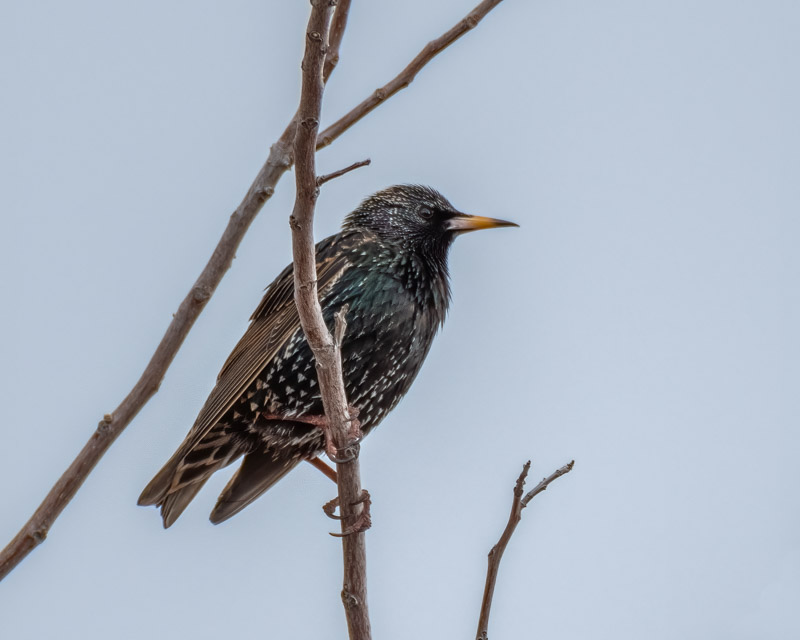
Finally some Western Bluebirds in a nearby field. These bluebirds always look like they are standing at attention.
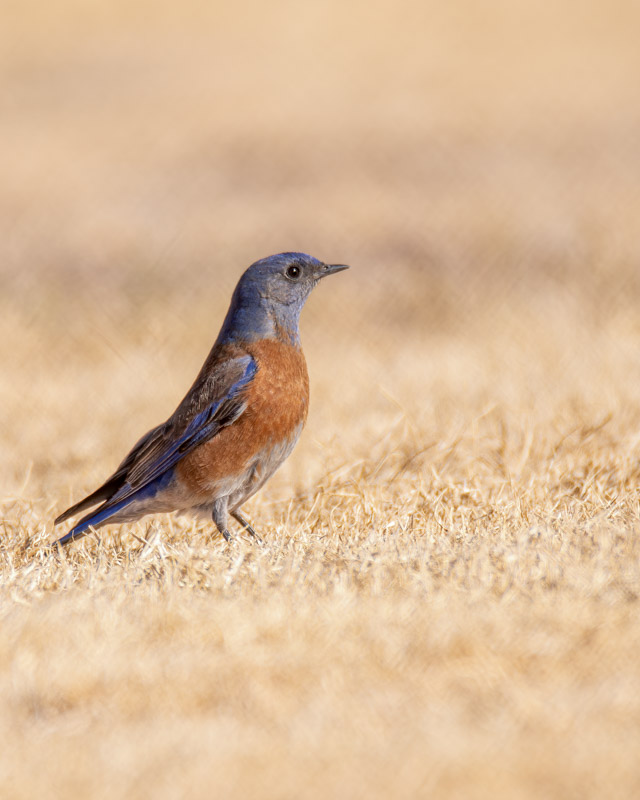
One of the Western Bluebirds flew from the ground onto a nearby palm tree. These are birds that just make me smile when i see them. The blue color is so different and so pleasing.
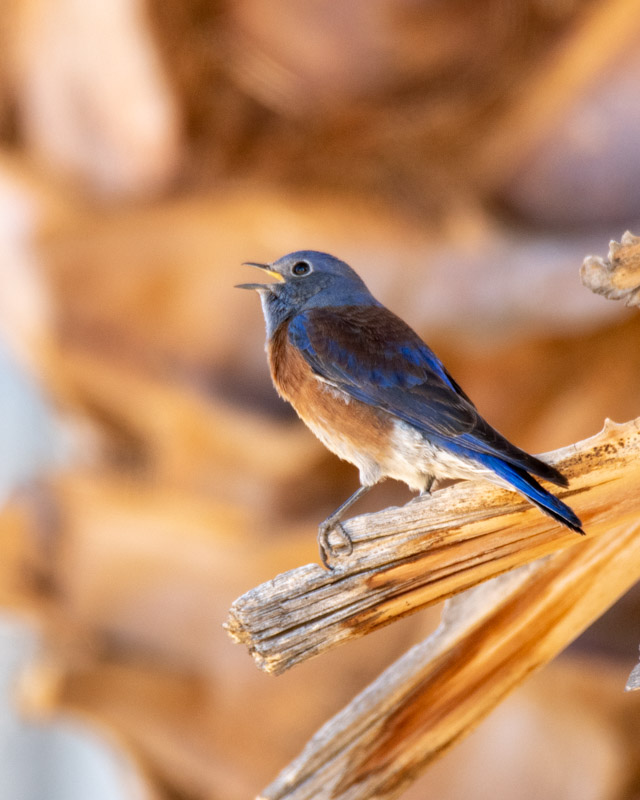
Who knew that winter could bring such pretty sights to the desert?
